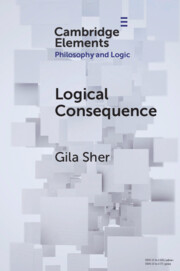Element contents
Logical Consequence
Published online by Cambridge University Press: 20 August 2022
Summary
- Type
- Element
- Information
- Series: Elements in Philosophy and LogicOnline ISBN: 9781108981668Publisher: Cambridge University PressPrint publication: 08 September 2022
References
- 5
- Cited by



